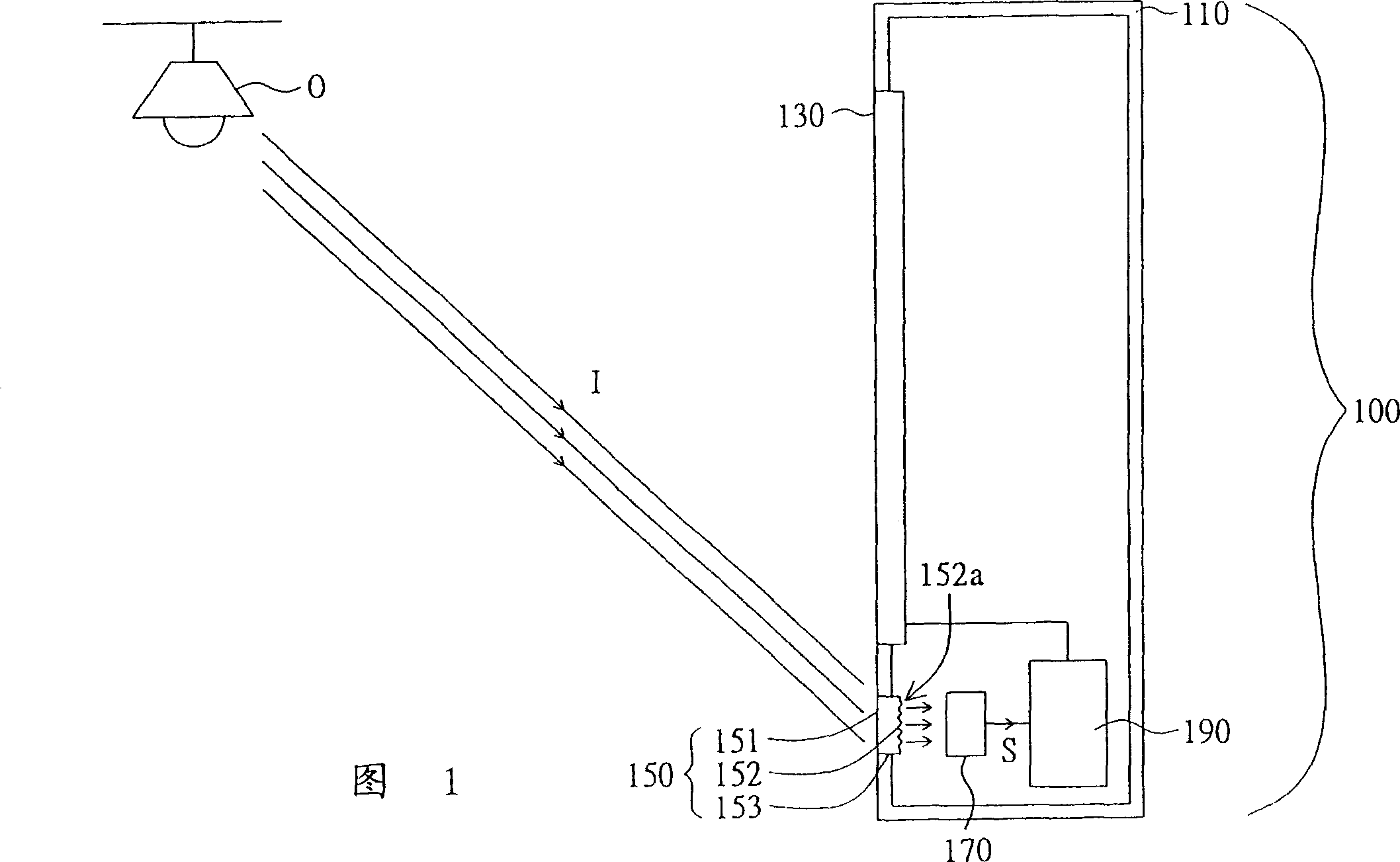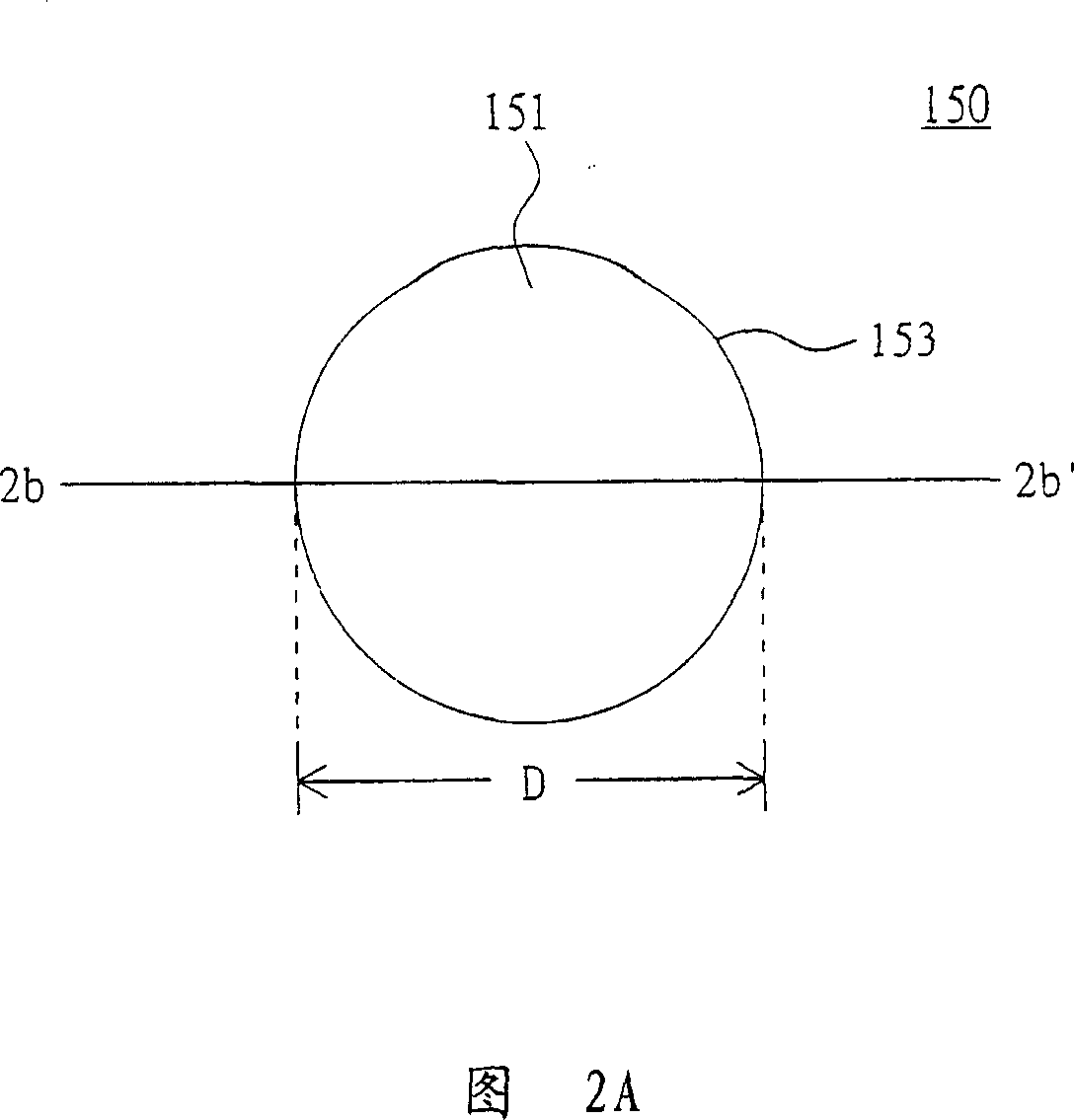Display device
A display device and surface configuration technology, which can be applied to static indicators, cathode ray tube indicators, instruments, etc., and can solve the problems that the display device cannot be embedded in the wall
- Summary
- Abstract
- Description
- Claims
- Application Information
AI Technical Summary
Problems solved by technology
Method used
Image
Examples
Embodiment Construction
[0027] Please refer to FIG. 1 , which is a schematic diagram of a display device adjusting screen brightness according to ambient brightness according to a preferred embodiment of the present invention. The display device 100 is, for example, a LCD TV or a plasma TV, and includes a casing 110 , a screen 130 , a light guide element 150 , a light sensor 170 and a control circuit 190 . The screen 130 is disposed on the front of the casing 110 . The light guide element 150 is, for example, a transparent material, such as polymethyl methacrylate (Poly Methyl Methacrylate, PMMA), MS resin, polymer carbonate (Poly Carbonate, PC) and polyethylene terephthalate (Polyethylene terephthalate). Terephthalate, PET) and so on. The light guide element 150 is used to receive and guide a light beam I emitted by the light source O, and the light guide element 150 includes a first surface 151 , a second surface 152 and a side surface 153 .
[0028] The first surface 151 is used to receive the l...
PUM
 Login to View More
Login to View More Abstract
Description
Claims
Application Information
 Login to View More
Login to View More - R&D
- Intellectual Property
- Life Sciences
- Materials
- Tech Scout
- Unparalleled Data Quality
- Higher Quality Content
- 60% Fewer Hallucinations
Browse by: Latest US Patents, China's latest patents, Technical Efficacy Thesaurus, Application Domain, Technology Topic, Popular Technical Reports.
© 2025 PatSnap. All rights reserved.Legal|Privacy policy|Modern Slavery Act Transparency Statement|Sitemap|About US| Contact US: help@patsnap.com



